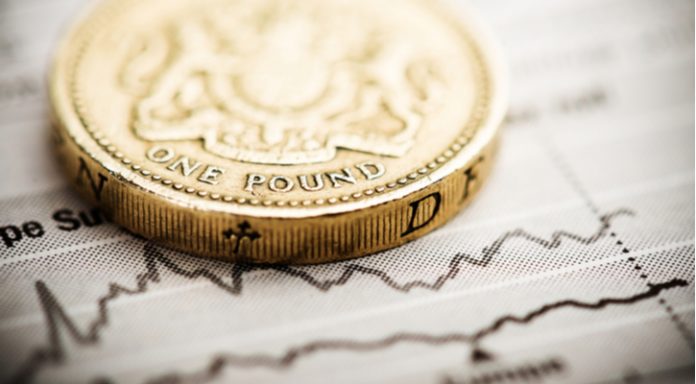The pound traded over 1% higher versus the US dollar at one point on Monday, before easing back to close the session 0.8% higher. The pound US dollar exchange rate hit a high of US$1.3052, this is the highest level that it has traded at in 6 weeks.
| What do these figures mean? |
|---|
|
When measuring the value of a pair of currencies, one set equals 1 unit and the other shows the current equivalent. As the market moves, the amount will vary from minute to minute. For example, it could be written: 1 GBP = 1.28934 USD Here, £1 is equivalent to approximately $1.29. This specifically measures the pound’s worth against the dollar. If the US dollar amount increases in this pairing, it’s positive for the pound. Or, if you were looking at it the other way around: 1 USD = 0.77786 GBP In this example, $1 is equivalent to approximately £0.78. This measures the US dollar’s worth versus the British pound. If the sterling number gets larger, it’s good news for the dollar. |
Strong UK economic growth data lifted the pound in early trade. The UK GDP grew 0.3% in July, a faster pace than the 0.2% growth that analysts had been expecting and significantly higher than the 0.1% reading of the previous session. The summer heat wave and the world cup encouraged consumers to hit the shops lifting the dominant service sector, whilst construction output hit a record level. The strong figures helped the pound off to a good start.
| Why does strong economic data boost a country’s currency? |
|---|
| Solid economic indicators point to a strong economy. Strong economies have strong currencies because institutions look to invest in countries where growth prospects are high. These institutions require local currency to invest in the country, thus increasing demand and pushing up the money’s worth. So, when a country or region has good economic news, the value of the currency tends to rise. |
Brexit optimism sent the pound soaring later in the session. EU Chief Negotiator Michel Barnier said that he believed that 6-8 week for the Brexit agreement was a realistic target. This news will be well received by UK Prime Minister Theresa May, who has been under immense pressure from her party. This olive branch from the EU could offer some stability to Theresa May’s government.
There are still many obstacles which Brussels and Theresa May will need to overcome, for example the Brexit deal still needs to make it through Parliament and with so many hard line Brexiteers, that in itself could be a challenge. However, the end is now in sight and a hard, no deal Brexit is looking like it could be avoided.
| Why is a “soft” Brexit better for sterling than a “hard” Brexit? |
|---|
| A soft Brexit implies anything less than UK’s complete withdrawal from the EU. For example, it could mean the UK retains some form of membership to the European Union single market in exchange for some free movement of people, i.e. immigration. This is considered more positive than a “hard” Brexit, which is a full severance from the EU. The reason “soft” is considered more pound-friendly is because the economic impact would be lower. If there is less negative impact on the economy, foreign investors will continue to invest in the UK. As investment requires local currency, this increased demand for the pound then boosts its value. |
Dollar Falls As Investors Shrug Off Trade War
The dollar was broadly out of favour in the previous session as sentiment picked up. Trade tensions had lifted the dollar in recent sessions as investors sought out its safe haven status. On Friday President Trump warned that the new trade tariffs on $200 billion worth of Chinese imports would take effect soon. He also threatened further tariffs on an additional $267 billion of Chinese imports. Fears of a full-blown trade war sent the dollar higher at the end of last week. However, by Monday investors were shrugging of the prospect, which pulled the dollar lower.
This publication is provided for general information purposes only and is not intended to cover every aspect of the topics with which it deals. It is not intended to amount to advice on which you should rely. You must obtain professional or specialist advice before taking, or refraining from, any action on the basis of the content in this publication. The information in this publication does not constitute legal, tax or other professional advice from TransferWise Inc., Currency Live or its affiliates. Prior results do not guarantee a similar outcome. We make no representations, warranties or guarantees, whether express or implied, that the content in the publication is accurate, complete or up to date. Consult our risk warning page for more details.
This article was initially published on TransferWise.com from the same author. The content at Currency Live is the sole opinion of the authors and in no way reflects the views of TransferWise Inc.





